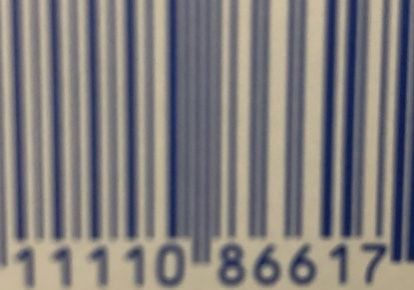
We’re all familiar with UPC and barcodes that appear on the packaging of items you purchase in physical stores. But the numbers encoded in barcodes hold tremendous value in the online space too. When are barcodes needed, and how do you find them? Read on.
The very important function of the barcode
The identifier for a product sold at retail stores is the same as the one used for selling that identical product online.
In today’s global marketplace, most retailers, wholesalers and online marketplaces like Amazon require that a unique identifier be assigned to every product, no matter who is selling it.
For online sellers, the UPC is the unbreakable link between online listings and physical product. It preserves accuracy in the inventory management process. It’s also the way that marketplaces track what’s being sold and who’s selling it.
Amazon, Google and eBay all require you to use verifiable, authentic product ID numbers that link to your GTIN. Resellers of products already listed with their own UPC’s do not require a unique ID.
They also help optimize your product’s ability to surface in the searches that come up when your customers are shopping online, because the coding process of assigning the numbers is based on product features, characteristics and variations like size and color.
For the new ecommerce seller, it’s important to come up to understand barcodes, UPCs, and how to get them set up properly from the start.
No matter what you’re selling or where it comes from, it needs a barcode.
Every product sold in a marketplace requires a barcode, even–or especially– if you make it yourself.
If you are selling“private label” products, those will require a unique bar code number. On the other hand, reselling products already listed on Amazon won’t need a UPC or EAN code. If yours is a product that’s never been sold before on Amazon but you aren’t the original manufacturer, you will need to supply the UPC or EAN from them.
Components of a barcode
There are two components to a barcode: UPC and GTIN.
The UPC is the graphic code composed of thick and thin black lines. The product’s GTIN is the series of numbers you see below the bars and spaces of the UPC barcode. Many retailers require their suppliers to use Global Trade Item Numbers (or GTINs) in their product identification processes. These numbers uniquely identify a product whether it is listed online, or is read by a barcode scanner.
A UPC barcode is encoded with a product GTIN, making it easy to track a product on its journey to a customer.
Unlike a supplier’s proprietary part number, the required identifier needs to be globally unique and it has to adhere to a universal standard. In the United States , this product identifier is the UPC number (GTIN-12.) A UPC is broken into two sections: a U.P.C. Company Prefix and a Product Number. GS1 US, a not-for-profit organization, is the sole authority for assigning a UPC company prefix.
This informational website is furnished by Bar Code Graphics. It provides direction about the numbering and bar code requirements for retail suppliers.
Obtaining a barcode for your product is a four-step, easy process:
Start on the GS1 US website.
Step One: Apply for your Company Prefix.
Step Two: Create a unique product number.
Step Three: Lay out the display of the barcode on product packaging
Step Four: Order your barcodes.
Buying barcodes vs. building them yourself
Barcodes sold by third-party companies may scan just fine at the point of sale, but they won’t have GTIN encoded in the barcode that’s unique to you or your brand. Barcodes that you buy instead of using a unique Company Prefix will identify another brand owner whenever that product is scanned through a barcode reader. If where or what you are selling is brand-sensitive or you have growth plans for a brand just starting out, we recommend going directly for your own barcode.
In our opinion, it’s well worth the small amount of extra effort to go through GS1 to get your own company prefix and GTIN.




